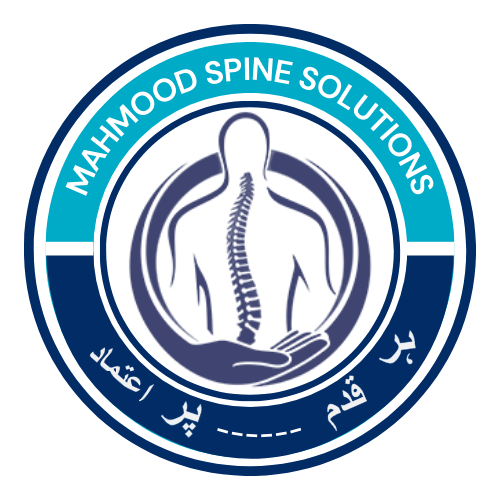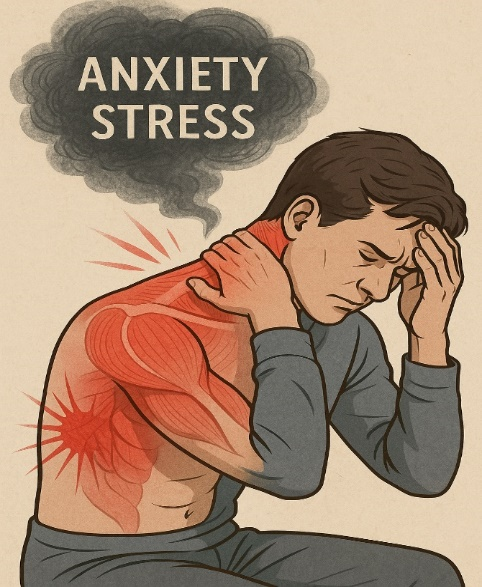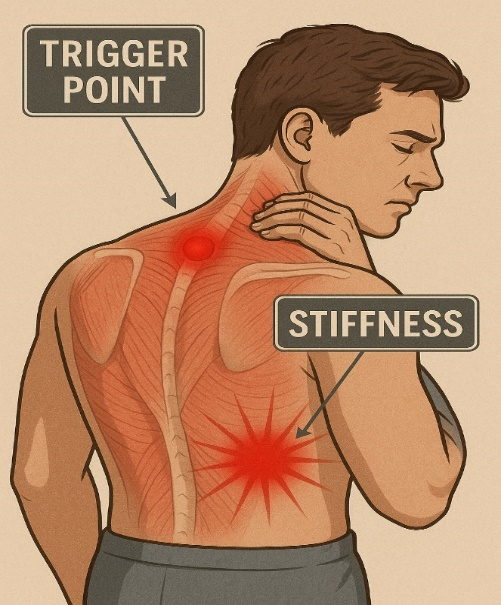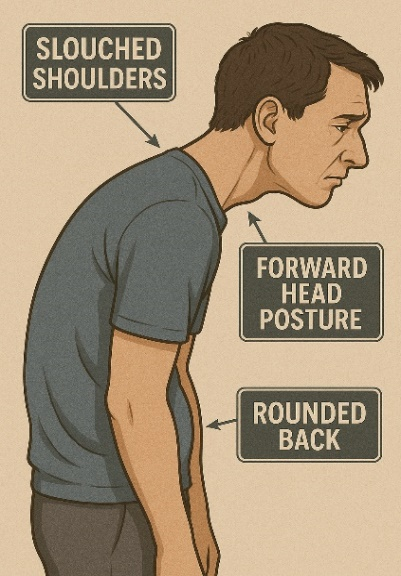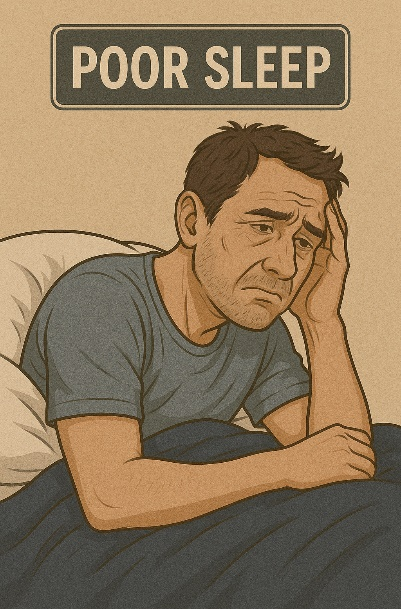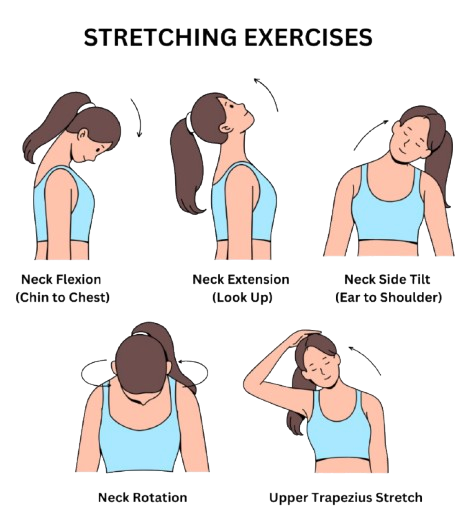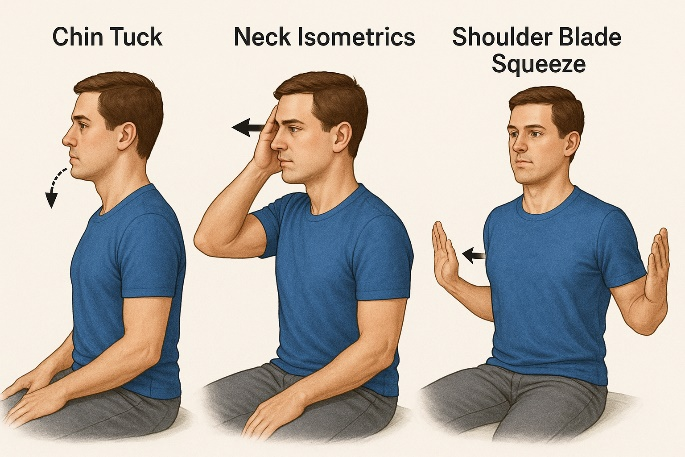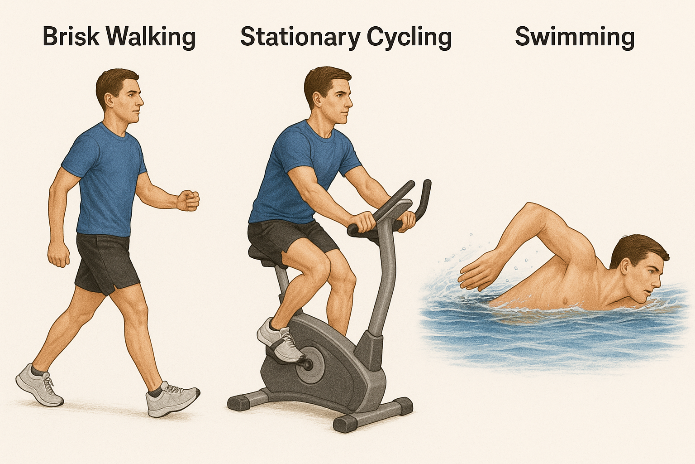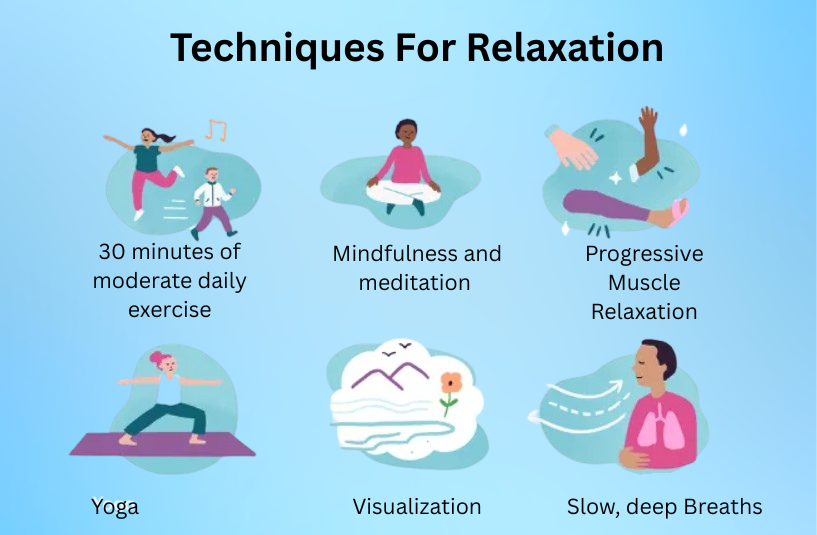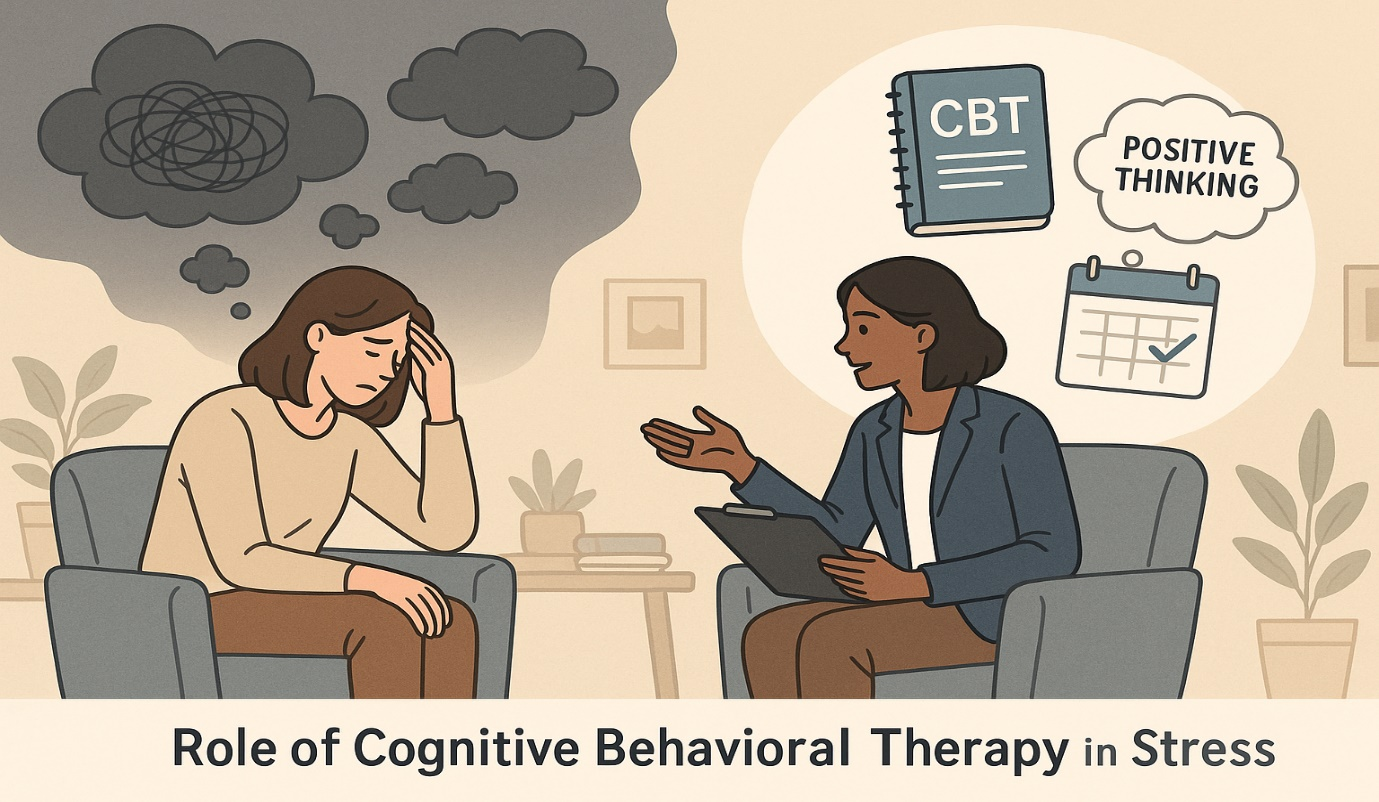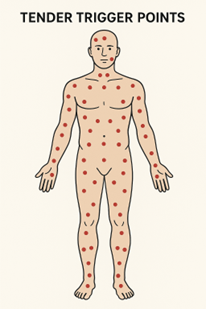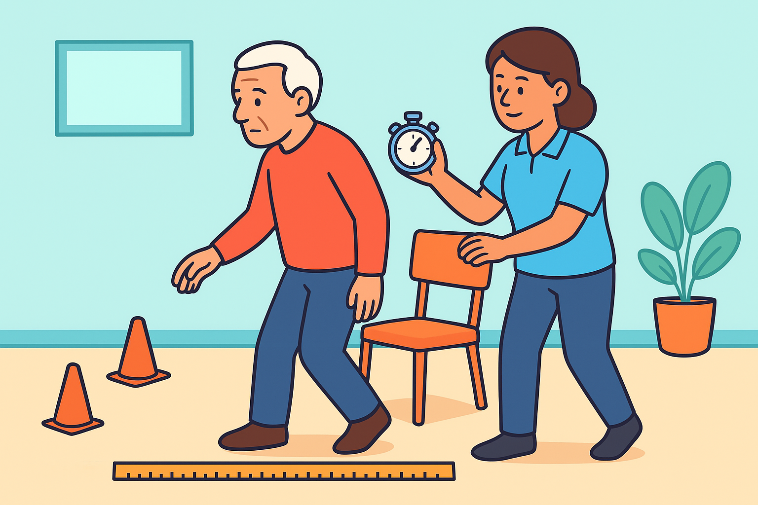Impact of Stress and Anxiety on the Back and Neck:
Stress and anxiety trigger physiological changes that significantly affect the musculoskeletal system. While they are psychological states, their impact on the body—particularly the back and neck—is real and measurable.
1. Muscle Tension:
Under stress, the body enters a “fight or flight” mode, releasing hormones like cortisol and adrenaline. These cause involuntary muscle contraction, particularly in the neck, shoulders, and lower back. Prolonged tension can result in:
- Stiffness and tightness
- Muscle fatigue and soreness
- Trigger points (painful muscle knots)
2. Poor Posture and Biomechanics:
Chronic stress often leads to defensive or collapsed posture, such as:
- Slouched shoulders
- Forward head posture
- Rounded back
- These positions overload spinal structures, contributing to:
- Cervical (neck) pain
- Thoracic and lumbar (mid and lower back) strain
- Spinal misalignment
3. Breathing Pattern Dysfunction:
Anxiety typically causes shallow, rapid chest breathing. This:
- Overuses neck and upper chest muscles (scalenes, sternocleidomastoids)
- Leads to tension, headaches, and upper back pain
4. Reduced Sleep and Recovery:
Stress impairs sleep quality, which reduces the body’s ability to heal and relax muscles. Poor recovery worsens pain and fatigue.
5. Central Sensitization:
In chronic stress or anxiety, the nervous system becomes hypersensitive to pain. Even minor aches can feel more intense, leading to chronic pain cycles.
Role of Physiotherapy in Managing Stress-Induced Neck and Back Pain:
Physiotherapy uses evidence-based techniques to address both the physical symptoms of stress and its underlying causes.
1. Manual Therapy:
- Soft tissue massage helps reduce muscle tension and improve circulation.
- Joint mobilizations improve spine mobility and decrease stiffness.
2. Therapeutic Exercises:
- Stretching exercises relieve tight muscles in the neck, shoulders, and back.
- Strengthening exercises support spinal alignment and posture.
- Aerobic activity improves endorphin levels and helps regulate stress.
3. Postural Education and Ergonomics:
Physiotherapists assess posture and movement, then provide personalized corrections and ergonomic advice to prevent strain during daily activities.
4. Relaxation and Breathing Training:
- Teaching diaphragmatic (deep) breathing improves oxygenation and reduces the use of overactive neck muscles.
- Relaxation techniques, such as progressive muscle relaxation and body scanning, reduce stress and promote calmness.
5. Education and Self-Management:
Patients are educated about the mind-body connection, pain neuroscience, and the relationships between stress and pain, empowering them to manage their symptoms with confidence.
Role of Cognitive Behavioral Therapy (CBT) in Stress Management:
Cognitive Behavioral Therapy (CBT) is a well-researched psychological approach that helps individuals manage stress, anxiety, and chronic pain.
1. Cognitive Restructuring:
CBT helps individuals recognize and challenge negative thought patterns such as catastrophizing (“this pain will never go away”) or helplessness, which worsen stress and pain perception.
2. Behavioral Activation:
It encourages engaging in meaningful, enjoyable, and healthy activities. This breaks the cycle of inactivity, isolation, and increased pain often associated with stress.
3. Coping Strategies:
CBT teaches practical tools such as:
- Stress management techniques
- Goal setting
- Time management
- Relaxation training
4. Pain Management:
CBT is proven effective in chronic pain management, helping to:
- Reduce pain intensity and distress
- Improve coping and function
- Reduce dependence on medication
5. Mindfulness Integration:
Many CBT-based programs incorporate mindfulness practices, helping individuals focus on the present and reduce anxiety-driven muscle tension.
Conclusion:
Stress and anxiety can lead to significant back and neck pain through muscle tension, poor posture, and altered breathing. Physiotherapy addresses these physical manifestations through hands-on therapy, exercises, posture correction, and education. On the other hand, Cognitive Behavioral Therapy (CBT) helps manage the mental and emotional components of stress, altering unhelpful thought patterns and behaviors that contribute to pain and tension. Together, physiotherapy and CBT offer a powerful, holistic approach to long-term stress and pain management.
About Authors
Dr. Muhammad Mahmood Ahmad is a Spinal as well as an Orthopedic Surgeon with over 14 years of experience currently practicing at Razia Saeed Hospital, Multan.
